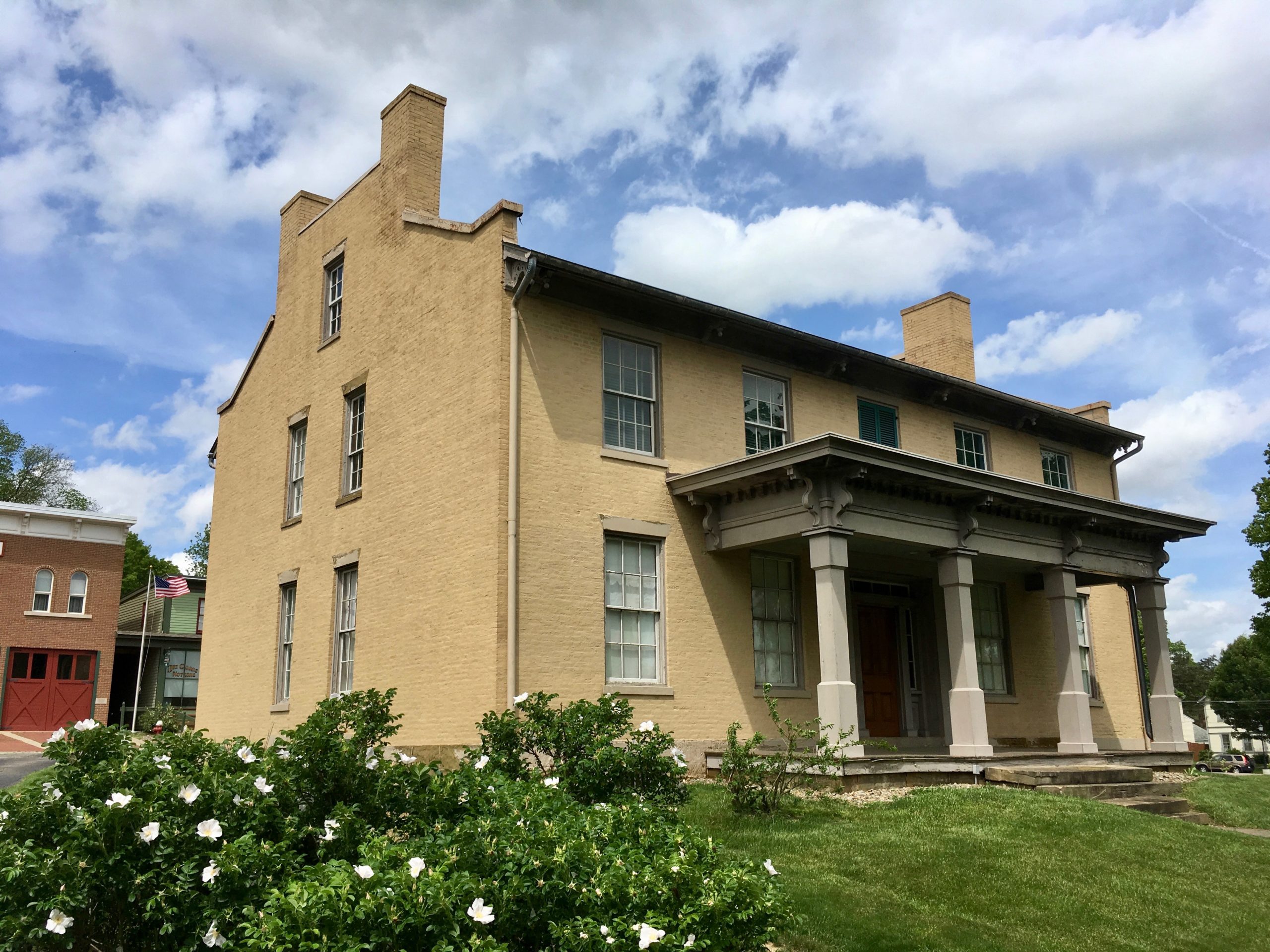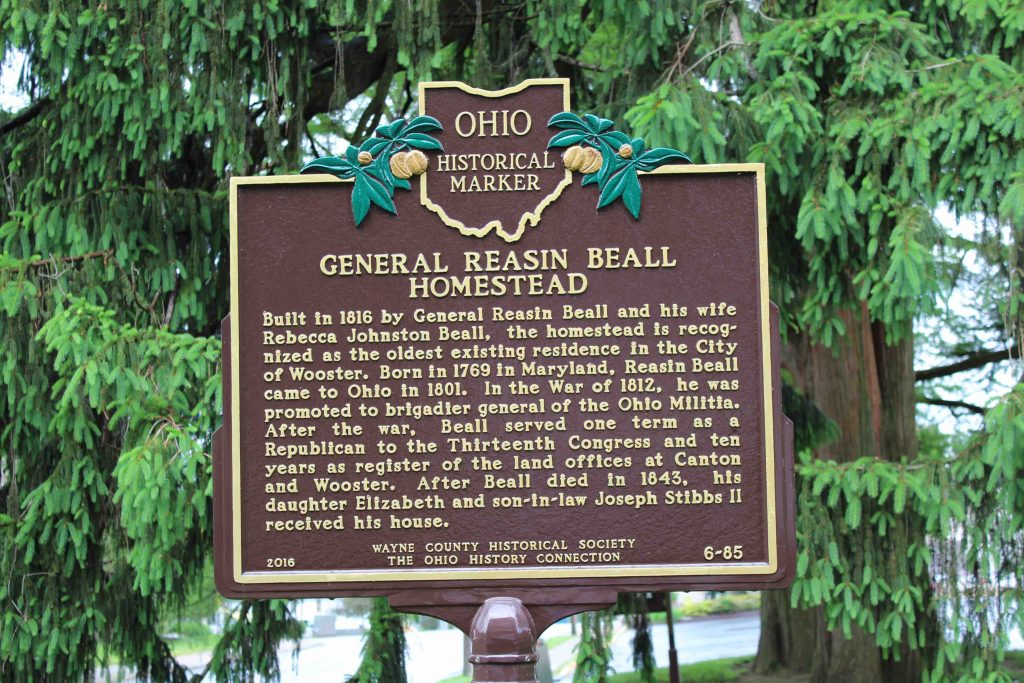
The Beall-Stibbs House is the oldest surviving residential structure in Wooster which did not begin as a log cabin. General Reasin Beall started felling trees for the Federal-style home in 1816 and completed it in the early 1820s. Beall was born in Montgomery County, Maryland on December 3, 1769. He enlisted in the military in 1790 and by 1803 he had been appointed battalion quartermaster.
Beall moved to Wooster after serving in the Thirteenth United States Congress. He remained politically active as register of the land offices at Wooster and Canton. Beall lived out the rest of his days in Wooster until his death on February 20, 1843.
Beall’s widow lived in the home until the early 1850s when Beall’s grandson, Reasin Beall Stibbs, was in control of the farm, which he actively managed. The Stibbs family embarked on an ambitious renovation of the house, adding a kitchen wing and an elaborate porch — reimagining the house as a modern Italian villa.
In 1876, the house was sold to a neighbor, John Kauke, who purchased it for his son, Cary, who then added a second floor to the kitchen wing.
The Beall-Stibbs House was used as a women’s dormitory for the College of Wooster from 1921 to 1955. On October 22, 1955, the college presented the structure to the Wayne County Historical Society, which used the property for its main museum. The Beall-Stibbs House reopened to the public in 2008 as a house museum. It has undergone a transition to an authentic recreation of how it looked during the 19th century. The first floor has been restored to the Stibbs era while the second floor has been restored to the earlier Beall era. The home retains amazing accurate details of early life in Wayne County, and is available for docent-led tours.

